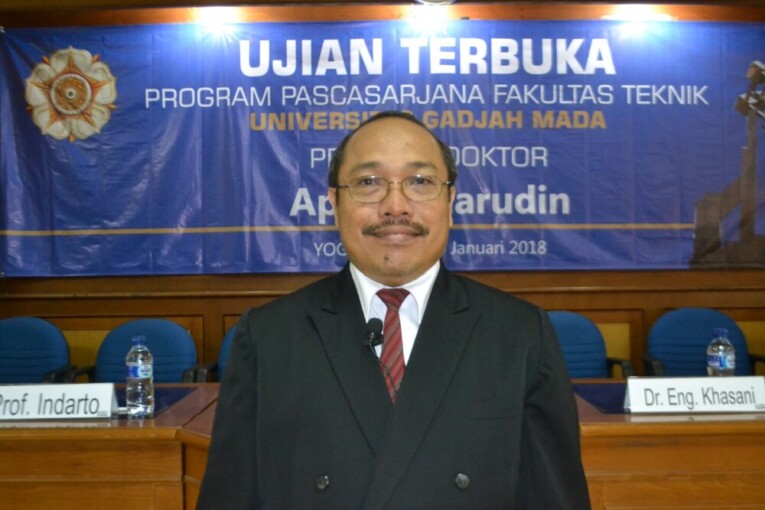
Study on the safety of nuclear power plant continues to be done. UGM doctoral student in Mechanical Engineering, Apip Badarudin, was studying the mechanism of flooding in counter-current flow gas and liquid in complex pipe system.
According to Apip, one of the weaknesses in previous flooding mechanism observation was that flooding identification was determined subjectively using visual observation or video images. To support this research, Apip made measurements that minimise visual identification.
“For my research, I have measured the thickness of film in flooding phenomena by image processing method and parallel wire conductance,” said Apip in his doctoral promotion at Faculty of Engineering UGM recently.
He found visual observation from film liquid behaviour when approaching the flooding, identified as two mechanisms of flooding, which are front-flooding and rear-flooding. “The two mechanisms may happen due to the position of flooding in the front pipe or the back pipe in the testing section,” he said.
Front-flooding occurs in horizontal pipe with the ratio of length and diameter (L/D) 50 and 94.5. It is also found in horizontal pipe with L/D 25 in low and medium water surface. The mechanism starts by the formation of unstable waves in the hydraulic jump of the horizontal pipe near the bend, the waves increase along with time.
“When the height of wave is at the maximum, it will close the pipe surface and on set of flooding occurs,” he said.
Meanwhile, rear-flooding is found in horizontal pipe with L/D 25 in high water superficial velocity. This starts from the sudden formation of big waves that close down the pipe surface near water outlet, and onset of flooding occurs.
Apip hoped the research would contribute to the development of Pressurized Water Reactor (PWR) design and renew databases. The data can also be used as preliminary data for the development of mechanistic model to predict flooding in complex pipe system.


